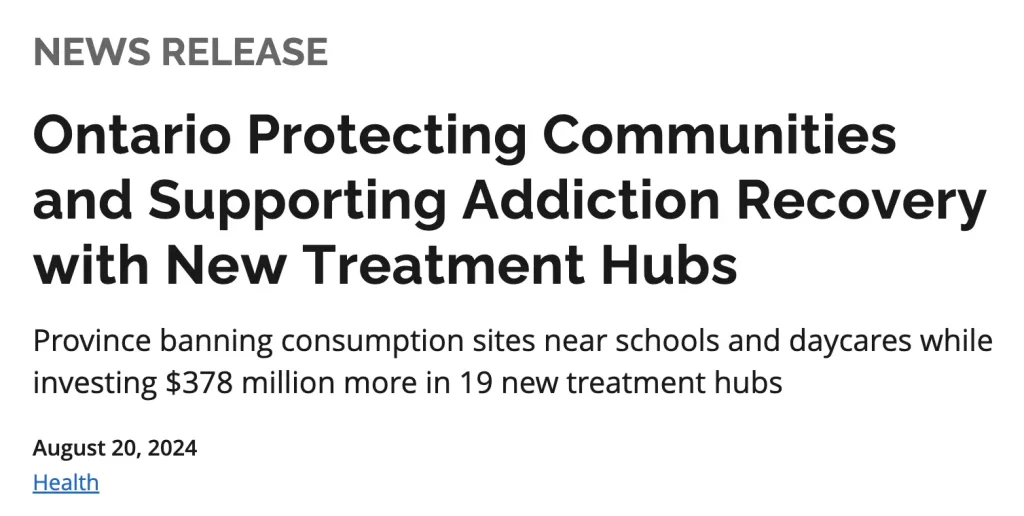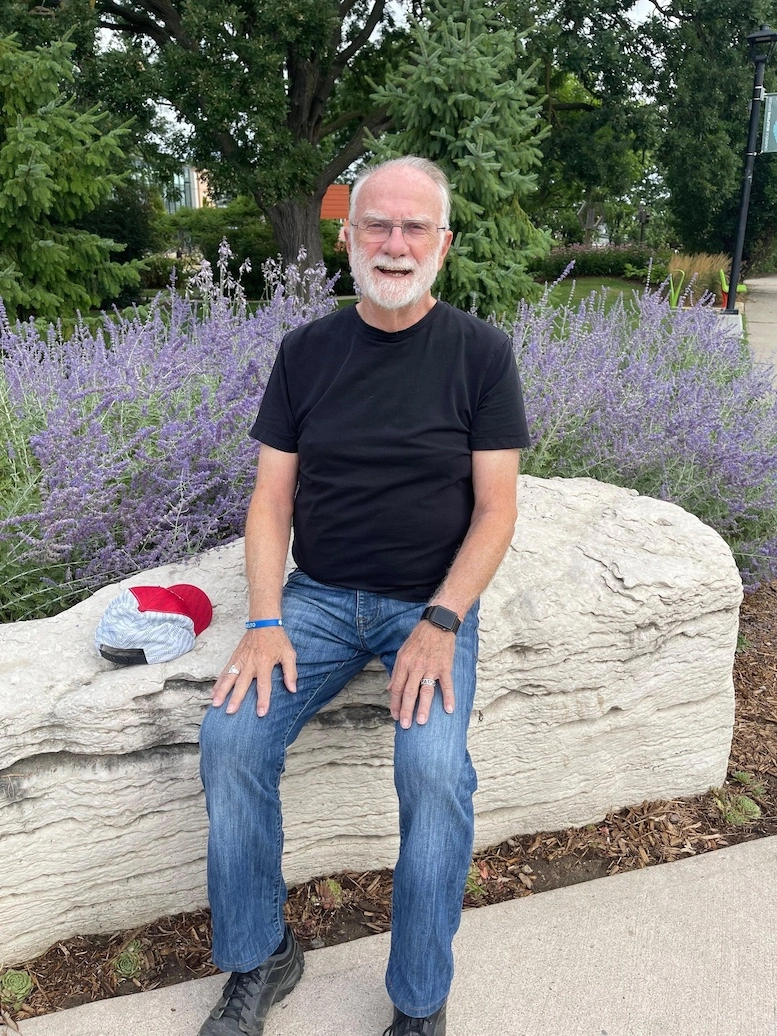Hi, Dave Fox here from Starscape SEO in Cambridge, Ontario. In recent months, Ontario’s approach to addressing the opioid crisis has taken a controversial turn, with the provincial government announcing a significant policy shift.
On August 20th, 2024, Ontario revealed its decision to ban supervised consumption sites near schools and child care centers, sparking a heated debate on the effectiveness of harm reduction strategies.

In Cambridge, the conversation has focused on replacing these sites with a new initiative known as “Heart Hubs,” slated for rollout in March 2025.
Today, I have a Q&A with Doug Craig, former mayor of Cambridge and current regional counsellor, to discuss his thoughts on this dramatic change in provincial policy.
With decades of experience serving his community, Craig offers a unique perspective on how these changes could reshape the region’s battle against drug addiction, and what the future holds for those struggling with substance abuse in Cambridge and the surrounding areas. Let’s dive right in!
Dave Fox: I read on the Canadian Network on Hepatitis C that “On August 20th, 2024, the Ontario government announced their plan to ban supervised consumption sites within 200 meters of schools and child care centers.” Is this province wide?
Doug Craig: Yes.
Dave Fox: You mentioned in a recent Facebook post that “Heart Hubs” are going to be taking the place of safe injection sites. How do you think they will they handle things differently, especially considering some of the factors in closing the safe injection sites?
Doug Craig: HART hubs are a provincial initiative and they will be replacing the Safe Injection sites this coming March 2025. We have limited information at this point. They are supposed to consist of treatment facilities, a housing aspect and there will be no injection site on the premises.
Dave Fox: What is your understanding of the motivation behind these decisions, broadly speaking?
Doug Craig: I can’t speak for the provincial thinking on the closure of Safe Injection sites except to say the government was probably reacting to public disapproval of the sites. An old political adage which seems quite true in this case, “politicians don’t lead public opinion, they follow it”.
Dave Fox: What is your opinion of Safe Injection sites, and how has it changed over the years, if at all?
Doug Craig: I have never agreed with Safe Injection sites because they have a very limited impact and I believe the money 1.5 million could be better spent elsewhere helping addicts. One has to understand that according to the region’s own health report, the safe injection site only provides services for an average of 50 individuals a day. Out in the community, there are 2,000 to 3,000 other individuals injecting drugs in private residences, alleyways and public washrooms. The Safe Injection site is overseeing less than 1 percent of the addiction population using drugs in this region.
Dave Fox: Based on drug addiction stats that you are aware of, has their been an increase in Cambridge / KW over the past 10 years, and to what do you attribute that increase, if there is one?
Doug Craig: I don’t believe we have as a regional community a good grasp of the problem we are facing. The recent updated health report states we have at least 10,000 people accessing harm reduction programmes in the region. Some estimate conclude up to 30,000. The reason? The economic situation forcing people out onto the streets and shelters is one probable cause and the lack of upstream prevention influencing young people before they start using drugs.
Dave Fox: How have you seen this play out in Cambridge in general, have you noticed increased crime, or would you say that things are about the same as ever in the region? Are things “safer” or “less safe” for people living in Cambridge to go out and about, considering all this drug abuse.
Doug Craig: I believe things are somewhat better. Kitchener has the most problems while Waterloo has the least which leaves us in the middle.
Dave Fox: You’ve indicated that the problem with drug addiction is a lot bigger than people realize. Where do you hear about this data, and what do you think is causing this problem, broadly speaking?
Doug Craig: The health unit reports are available stating numbers and one health expert outside the regional staff has stated that he believes the numbers approach 30,000.
Dave Fox: Are people coming here from out of town and “settling” here, or are they leaving here for elsewhere?
Doug Craig: The more services that are provided in terms of shelters, free food tables etc. These attract out of region individuals here.
Dave Fox: Where do you see this all going and what’s your hope for Cambridge / the KW region?
Doug Craig: We need to grasp the overall problem in terms of numbers and realize that the regional resources are totally inadequate to handle the size of the problem. The solution is provincial and federal help on a major scale. The regional community does not have the financial resources or legislative powers to solve this problem.
Thank you to Doug Craig for sharing his insights on the challenges surrounding drug addiction in Cambridge and the broader KW region, as well as the province’s shift from safe injection sites to the new “Heart Hub” initiative.
It’s clear that the road ahead will require collaboration, understanding, and substantial support from both provincial and federal governments to truly address the scale of this issue.
As this transition takes place, we’ll be watching closely to see how these changes impact communities across Ontario. If you have any thoughts or experiences related to this topic, feel free to reach out—we’d love to hear your perspective.
I’m Dave Fox, and on behalf of Starscape SEO, thanks for stopping by. Stay tuned for more discussions on the issues that matter most to our local communities.


Doug is looking healthier than ever and sounding very reasonable with his heart still beating for our City to be a beautiful healthy place to live.
I wonder if he has plans to run for mayor again?
Might be a good idea since he still seems to have his pulse on what our City needs.